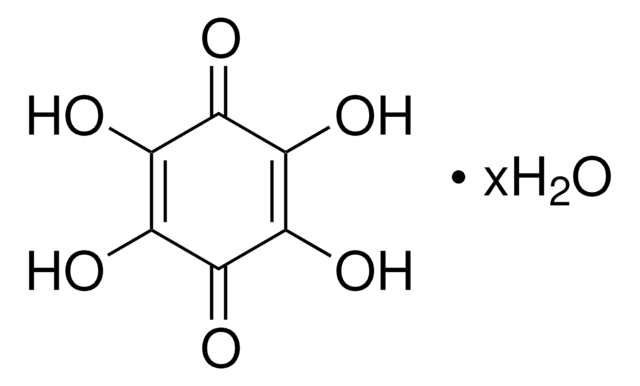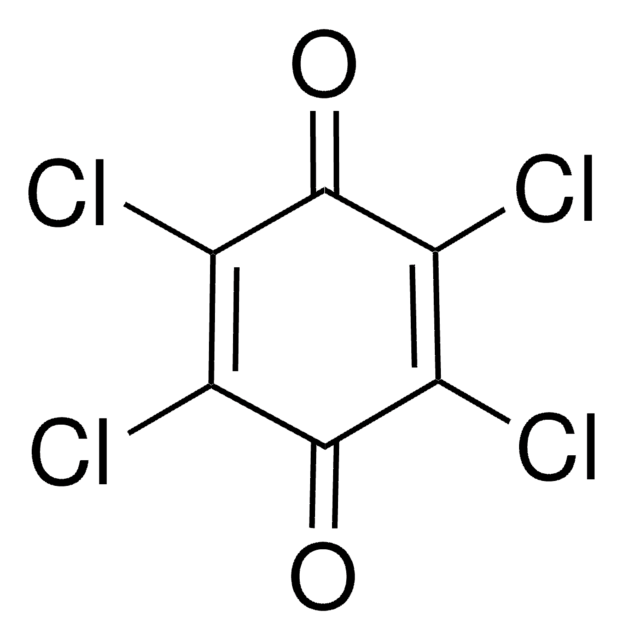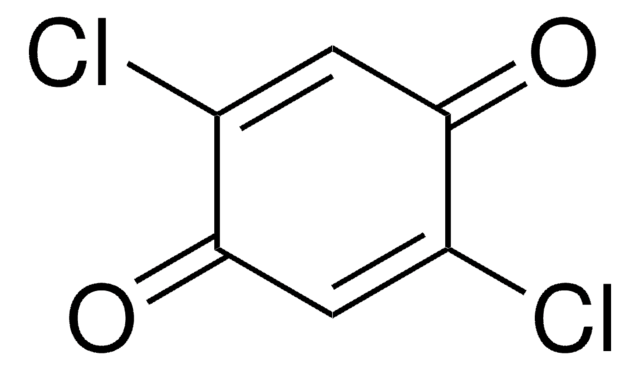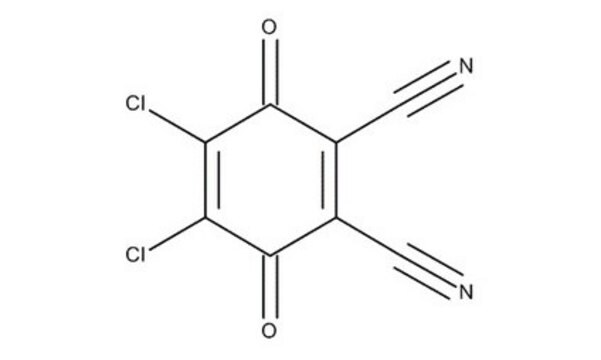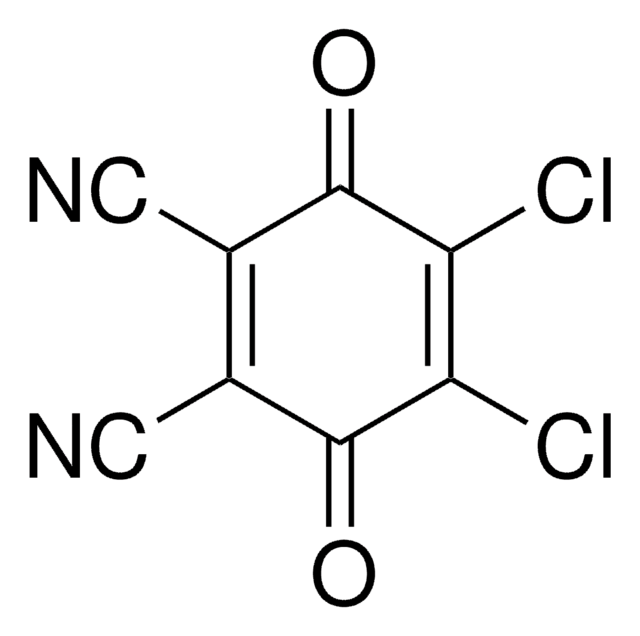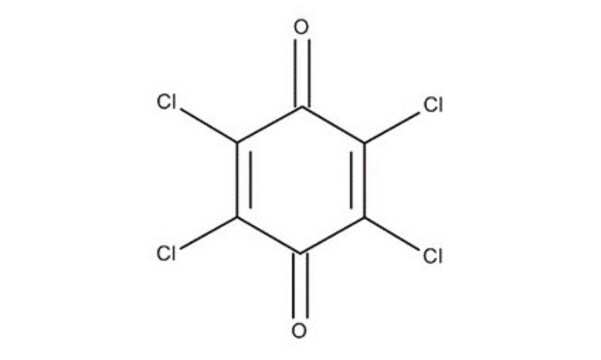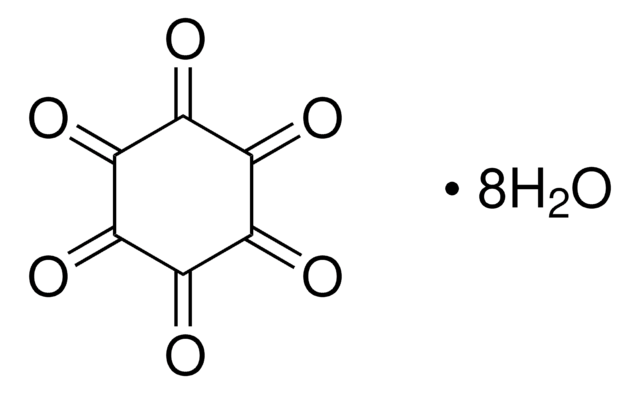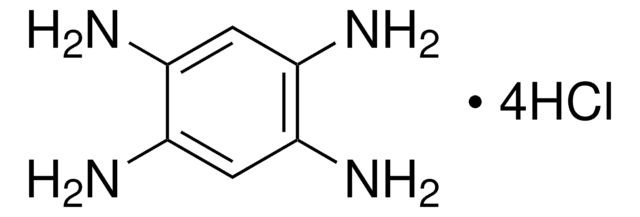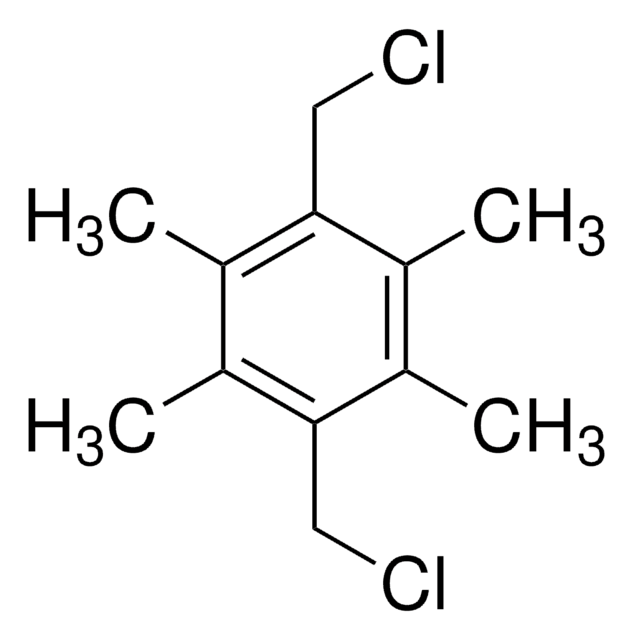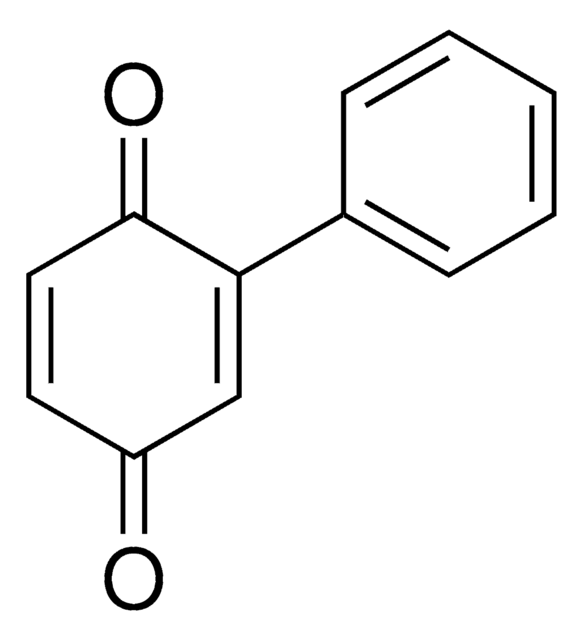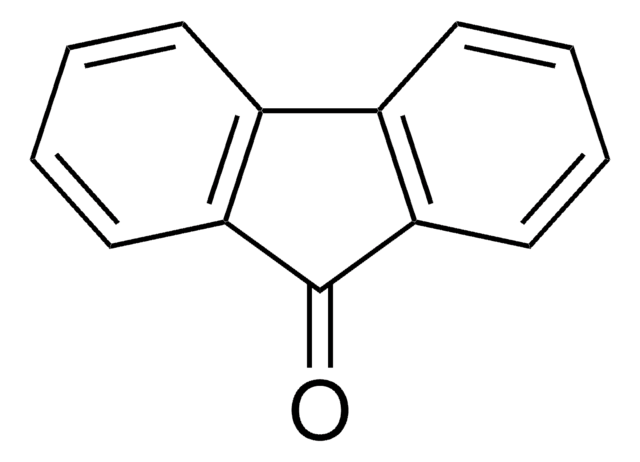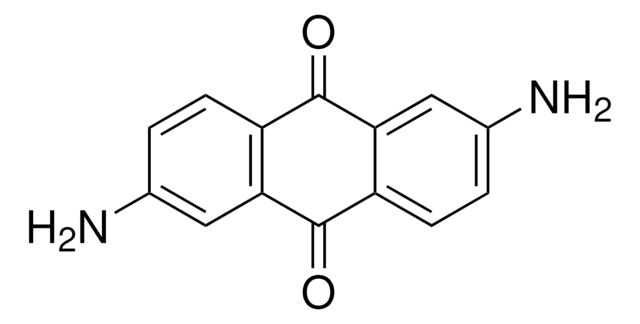C8136
Chloranilic acid
≥98%
Synonyme(s) :
2,5-Dichloro-3,6-dihydroxy-2,5-cyclohexadiene-1,4-dione, 2,5-Dichloro-3,6-dihydroxy-p-benzoquinone, NSC 6108, NSC 97383
About This Item
Produits recommandés
Niveau de qualité
Essai
≥98%
Forme
powder
Pf
≥300 °C (lit.)
Chaîne SMILES
OC1=C(Cl)C(=O)C(O)=C(Cl)C1=O
InChI
1S/C6H2Cl2O4/c7-1-3(9)5(11)2(8)6(12)4(1)10/h9,12H
Clé InChI
IPPWILKGXFOXHO-UHFFFAOYSA-N
Vous recherchez des produits similaires ? Visite Guide de comparaison des produits
Application
- Acting as a proton donor in reactions studying dimensionality control
- Synthesis of dimethylbipyridyl complexes
- Synthesis of (nonylbenzimidazolylmethyl)benzene for preparation of neutral altitudinal rotor-shaped dirhenium metallacycles
- Charge-transfer reactions with metoprolol tartrate
- Salt formation with organic bases
- Synthesis of osmium metalla-rectangles with anticancer activity
Mention d'avertissement
Warning
Mentions de danger
Conseils de prudence
Classification des risques
Eye Irrit. 2 - Skin Irrit. 2 - STOT SE 3
Organes cibles
Respiratory system
Code de la classe de stockage
11 - Combustible Solids
Classe de danger pour l'eau (WGK)
WGK 3
Point d'éclair (°F)
Not applicable
Point d'éclair (°C)
Not applicable
Équipement de protection individuelle
dust mask type N95 (US), Eyeshields, Gloves
Faites votre choix parmi les versions les plus récentes :
Déjà en possession de ce produit ?
Retrouvez la documentation relative aux produits que vous avez récemment achetés dans la Bibliothèque de documents.
Les clients ont également consulté
Notre équipe de scientifiques dispose d'une expérience dans tous les secteurs de la recherche, notamment en sciences de la vie, science des matériaux, synthèse chimique, chromatographie, analyse et dans de nombreux autres domaines..
Contacter notre Service technique